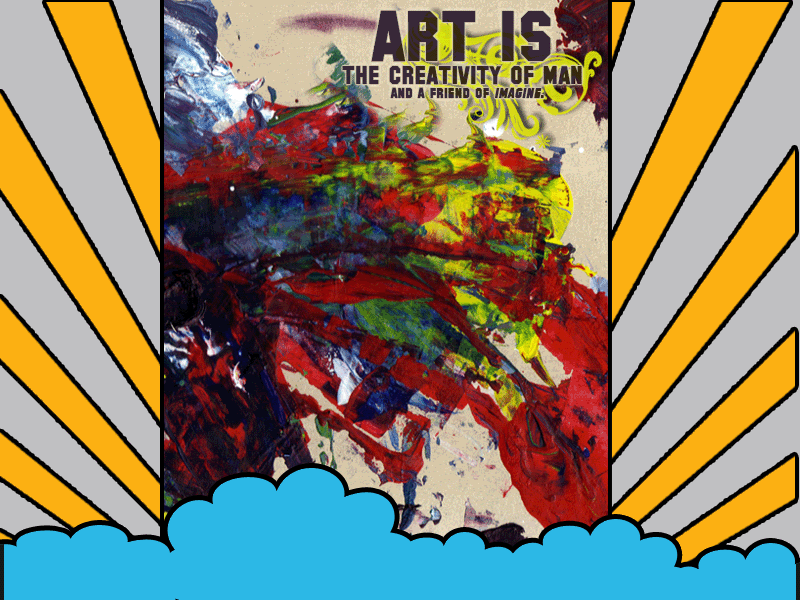Origin of Chinese Painting
Our prehistoric Chinese ancestors at first knew little more than hunting, the ruminents of survival. With time, life has become more settled. Ceramic vessels were formed from clay, eating and drinking became more convenient. Designs were painted on pots and bowls which earn appreciation and attention in today's world. Chinese painting may be composed of few thousands of mountains and valleys, or it may be just a single peak, a single flower or a single tree, or it may also be a glance between two people or a person and an animal. The final goal of the paintings is to lead the viewers into the paintings, making one feels like they are in the true scene described by the paintings.
Chinese Painting from Different Centuries
> HAN DYNASTY
During the Han Dynasty, pictorial art was cut in stone engravings and painted on walls and silk; subject matter was dominated by humans and animals. Painting of the Han Dynasty was characterized by qualities of boldness and substantiality, and its predominant function was didactic-- to educate the people.
>TANG DYNASTY
Tang Dynasty is considered the golden age in Chinese civilization where Chinese Painting developed dramatically. Figure painting reached the height of realism in the art of the court of the Southern Tang (937-975). Buddhist paintings and ''court paintings'' - including paintings of Buddha, monks, nobles etc.- played the major role in the development of Chinese paintings. The landscape (shan shui) painting developed quickly and reached its first maturation in this period.
Evening Colour on Autumn Mountain
Evening View over Streams and Mountains
> SUNG DYNASTY
It is believed that the development of the paintings in the early Sung was on the basis of the achievements of the Tang and the Five Dynasties. Landscape painting was first rose to wide prominence. There had been quite a number of large-scale landscape paintings with mountains as main feature. In paintings of the Sung Dynasty, one could also find animals, birds, flowers and humans that were not only accurately depicted in shape and manner, their inner substances, emotions, ideas and aspirations were also captured in the Chinese Paintings.
Heavy Snow on Mount Guan
Wild flowers and Black Rabbit
Techniques of Chinese Paintings
Chinese Brush
First, there is the Chinese brush. Though similar to the brush used for watercolor painting in the West, it has a finer tip suitable for dealing with a wide range of subjects and for producing the variations in line required by different styles. Since the materials used for calligraphy and painting are essentially the same, developments in calligraphic styles and techniques can also be used in painting.
Brush Techniques and Strokes
The ancients used the expression yu pi yu mo(to have brush, to have ink). These show the significance of the meaning for the two terms pi(brush) and mo(ink).
The brush techniques so much emphasized in Chinese painting include not only line drawing but also the stylized expressions of shade and texture (cunfa) and the dotting methods(dianfa) used mainly to differentiate trees and plants and also for simple embellishment.
The use of ink
Ink occupies an exceedingly important position in traditional Chinese painting, whether it is figure painting, landscape painting or flower-and-bird painting, pure line drawing, ink-and-wash, light colouring or heavy colouring. Black is the main colour of traditional Chinese painting.Th.e use of ink involves four processes: outlining showing the shades and texture of rocks and mountains by light ink stroke, applying dots and colouring. In the use of ink you should stress that "colour does not impair ink" and "colour does not destroy the shape." Images are primary. Brushwork and ink depict the images, and colours only enrich them.
The use of color
The use of colour in traditional Chinese painting stresses the intrinsic colour of the object, varying the shades on the basis of the intrinsic colours. Very early in ancient China the principle was set forth: "Colours should be presented in accordance with the requirements of different categories of objects." Colour in Chinese painting is mostly used after finishing the basic modelling with brushwork and ink. It involves variations of brightness of the intrinsic colours, mutual contrast and harmonious relations between various intrinsic colours, coordination of brush-work and ink technique and consideration of colours' textural functions on paper and silk. Traditional Chinese painting does not depict the complexities of light and colour, but, all the same, it achieves truthful effect with exceedingly artistic appeal.


OTHER CHINESE PAINTINGS

